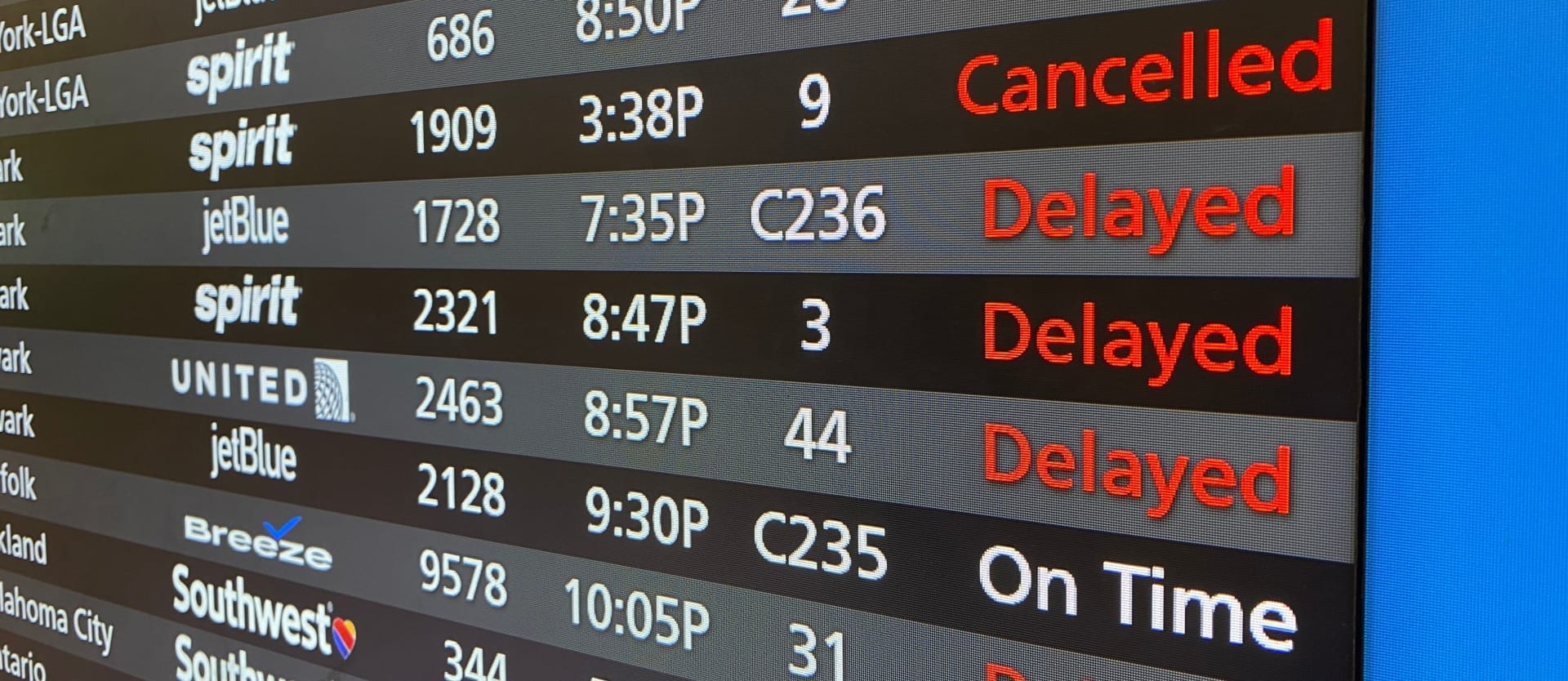In our previous article, we reviewed the key challenges travel resellers face when moving to NDC, or New Distribution Capability. This time, we’ve flipped the lens to airlines—and asked industry experts why, 13 years after IATA launched NDC, the program’s main beneficiaries—the carriers—still haven’t reached universal adoption.
NDC promises and adoption levels
IATA’s NDC messaging standard is integral to the broader industry transformation to modern airline retailing built on offers and orders (O&O), with carriers controlling what they sell on both direct and third-party channels. The shift involves replacing the legacy PNR/e-ticket/EMD trio with ONE Order—a single record that encapsulates everything needed to manage a purchase. At the end of the day, the initiative aims to let suppliers
- avoid fees imposed by global distribution systems (GDSs) for driving indirect bookings;
- expand the product portfolio with ancillaries, promotional fares, bundles, third-party services, etc.;
- present products, using rich media (photos and videos), and providing more information on them (policies, passenger reviews, etc.);
- personalize offers and adjust fares in real time, applying continuous pricing;
- and more.
“Though implementing NDC is a considerable multi-year investment, it is modest compared to costs such as aircraft engines or tires,” says Namrata Balwani, Сhief Marketing Officer at TPConnects, a global travel content aggregation and distribution technology company. “Airlines realize ROI through greater control over distribution and optimized sales. While short-term returns are unlikely, the long-term financial and strategic benefits of NDC must be considered.”
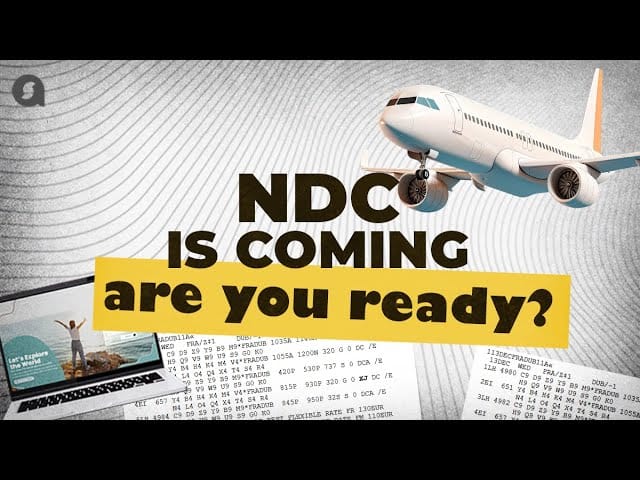

New Distribution Capability: How NDC Boosts Airline Retailing
From a financial standpoint, transitioning to NDC offers the potential to lower distribution costs and unlock new revenue streams, especially through higher attachment rates (the percentage of secondary products sold alongside the primary ones) for ancillaries. “I’ve seen good performing airlines that had an attachment rate of 5 to 8 percent in the EDIFACT,” shares Barbara Moreno, Director of Product Marketing at Accelya Group, a global software provider for the airline industry. “But if we look at our NDC customers, some of them have reached attachment rates of 35 percent.”
With the destination defined, the next question is: Where do airlines currently stand in their journey, and when are they supposed to achieve full O&O adoption?
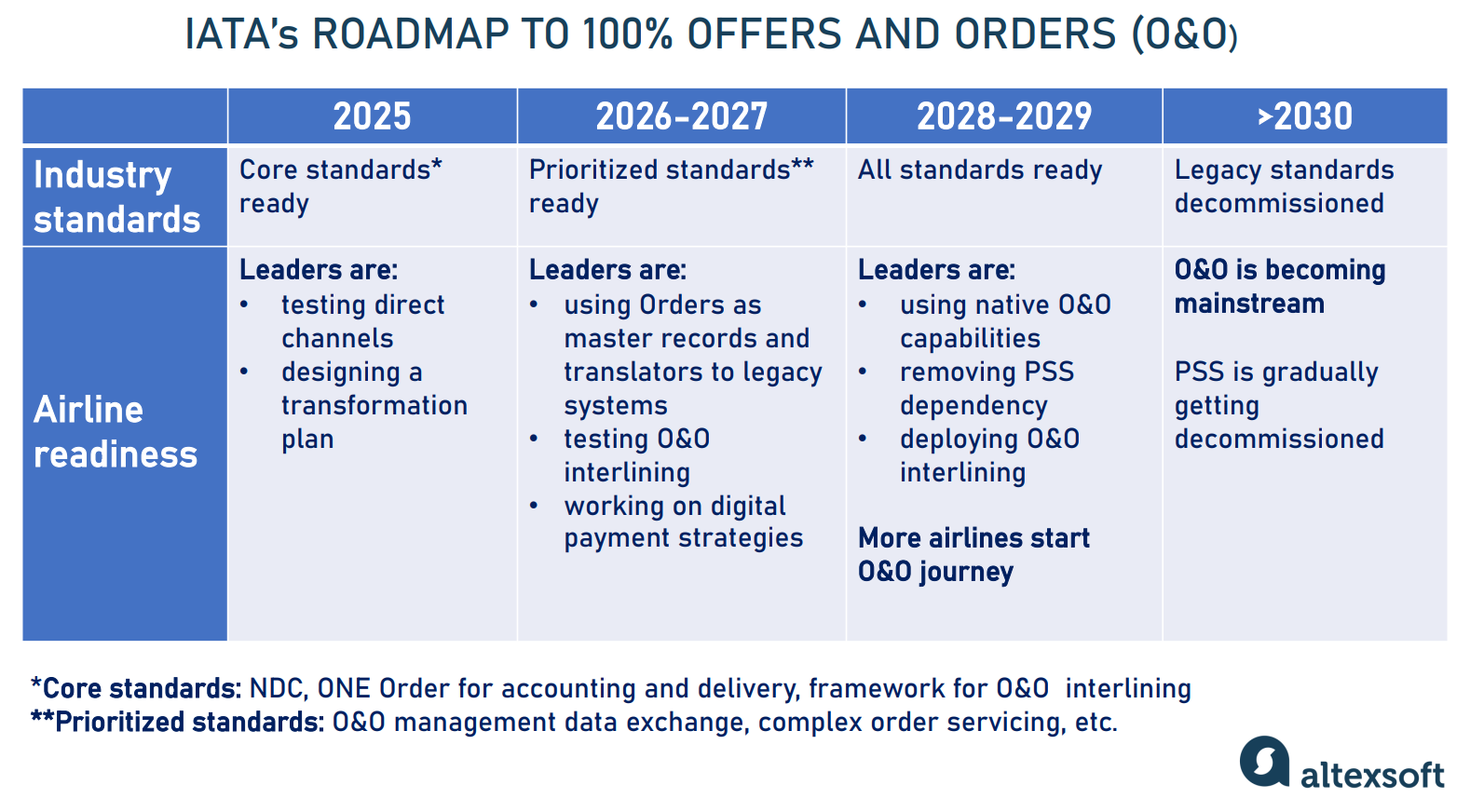
Airlines’ journey to full Offer&Order adoption. Source: 2025 Annual Review by IATA
According to IATA’s 2025 Annual Review, even the leading NDC airlines are still in the setup phase, while many others will only begin their O&O transition in 2028-2029. It’s unlikely that O&O will become mainstream before 2030, by which time legacy passenger service systems (PSSs) and text-based EDIFACT messaging are expected to be gradually discarded. Yet, of course, it can take longer.
While IATA is actively developing standards and resources to support the transition, the path forward is not fixed. Each airline sets its own timeline and course of action.
“It involves not just a technological shift, but also organizational change, cross-functional coordination, and rethinking distribution strategies,” explains Su Zhao, Senior Product Manager at Alaska Airlines, now actively developing its NDC channels. “Many carriers are cautious due to the operational risks, costs, and need for partner alignment. The value is clear, but the transformation is resource-intensive and must be phased carefully. For example, a major carrier may need to rewrite legacy code and retrain large internal teams before deploying NDC at scale, which can delay progress despite its potential benefits.”
Airlines are slow to adopt NDC mainly due to legacy technology constraints, operational complexity, and the dominance of GDS-EDIFACT systems, which still account for 88% of indirect sales globally.
Ultimately, it’s an individual journey that spreads over several levels, each with its own hurdles:
- technical level (implementing and maintaining new technologies and integrations);
- contractual level (revising legacy agreements, which can restrict how and where airline content appears);
- product level (developing products to entice the seller community); and
- organizational level (educating staff to process NDC bookings).
Progress at one level doesn’t automatically ensure readiness at the others. Below, we’ll look at each level and its unique challenges separately.
Technical level
The technical level involves several key issues, including (but not limited to) significant investments in new solutions, integrations with internal and external systems, API upgrades, and managing increased transaction volumes. “The main challenge is re-architecting core distribution systems to support NDC APIs while maintaining service quality and reliability,” states Namrata from TPConnects. “Airlines struggle with fragmented industry tech stacks, ensuring backward compatibility with existing software, and training both IT teams and sales partners, all while operating in a live business environment.”
One of the first critical decisions airlines must make is whether to build an NDC platform in-house or partner with third-party providers.
Upfront costs: Building vs buying decision
Like any new technology, NDC requires significant IT investments and presents a classic build vs. buy decision, which is common in all industries. “There’s the upfront cost of technology and human resources,” recognizes Raquel Portillo Escrich, NDC Product Manager at Air Europa. “Airlines need to either find the right tech partner or build their own solution, and the kind of expertise needed for this transition is very specific and often hard to find.”
In-house development offers full control over functionality, user experience, and branding, but it demands strong technical expertise, longer implementation timelines, and significant costs—not just for development but also for ongoing maintenance.
On the other hand, ready-made products enable faster deployment and access to a wider partner network—without overburdening internal resources. However, these benefits come with trade-offs, including less flexibility, potential vendor lock-in, and limited influence over how the airline's unique goals are achieved.
“The decision ultimately depends on the airline’s digital maturity, IT capacity, and long-term strategic goals,” shares Su. “At Alaska Airlines, we have developed our own proprietary NDC API, which has provided us with tremendous flexibility in managing our roadmap and aligning NDC with our broader retailing and servicing strategy. This control enables us to adapt quickly to new business opportunities, prioritize the features most relevant to our customers and partners, and ensure consistency across channels—both direct and NDC.”
Many airlines prefer partnering with an established NDC API vendor that has years of market experience and a deep understanding of the industry. “The best approach is to find a tech partner that offers strong API capabilities but is also flexible and willing to develop custom features to help boost NDC adoption,” says Raquel from Air Europa.
All in all, opting for the best available technology over the cheapest will pay off in the long term.
“If you rely on a faulty, non-scalable, and incomplete API, you’ll face a surge in call center inquiries,” warns Juan Pablo (JP) Olmos, Senior Expert in Modern Airline Retailing at Branchspace, a software provider working with airlines. “You’ll need to allocate more resources to maintain relationships with agencies, or they’ll abandon your channels. Paying more for technology upfront will eventually reduce operational costs.”
Integration complexities
Another problem airlines face is the complexity of integrating new platforms with existing legacy systems that have been in place for decades.
Su from Alaska Airlines highlights this as the most significant technical challenge: “Internally, NDC must interface seamlessly with PSS, revenue management, ticketing, and servicing systems. Externally, airlines must support a diverse partner ecosystem, including aggregators, GDSs, and OTAs, each with unique technical and commercial requirements. For instance, integrating NDC with a legacy PSS might take months of testing and development, especially if the airline offers multiple fare brands or ancillary products.”
Namrata Balwani notes that using NDC middleware and gateways from B2B providers helps bridge legacy PSS with modern NDC API infrastructures, preserving the integrity of data and transactions and minimizing disruption. “One of the key advantages of TPConnects’ Astra platform is its flexibility—it integrates seamlessly with airlines’ internal systems, such as CRM platforms and single sign-on (SSO), while also accommodating specific reporting requirements.”
As mentioned above, besides internal systems, airlines must establish direct connections with various aggregators and travel agencies—each with its own challenges. "We often find that the available information about NDC is limited, overly technical, or unclear, making it difficult to effectively support new partners. This lack of clarity also means it’s not always evident which areas of the business will be impacted, or how," Raquel from Air Europa explains. "From a commercial standpoint, it's also challenging to find agency partners with the right technological capabilities who are willing to be the first to test and adopt the solution."
Continuous API upgrades and backporting
The NDC messaging schema is constantly evolving, like a car getting new upgrades. While many early adopters are still riding the trusty old horse, version 17.2—the first mature release from 2017—IATA has already rolled out version 24.3.
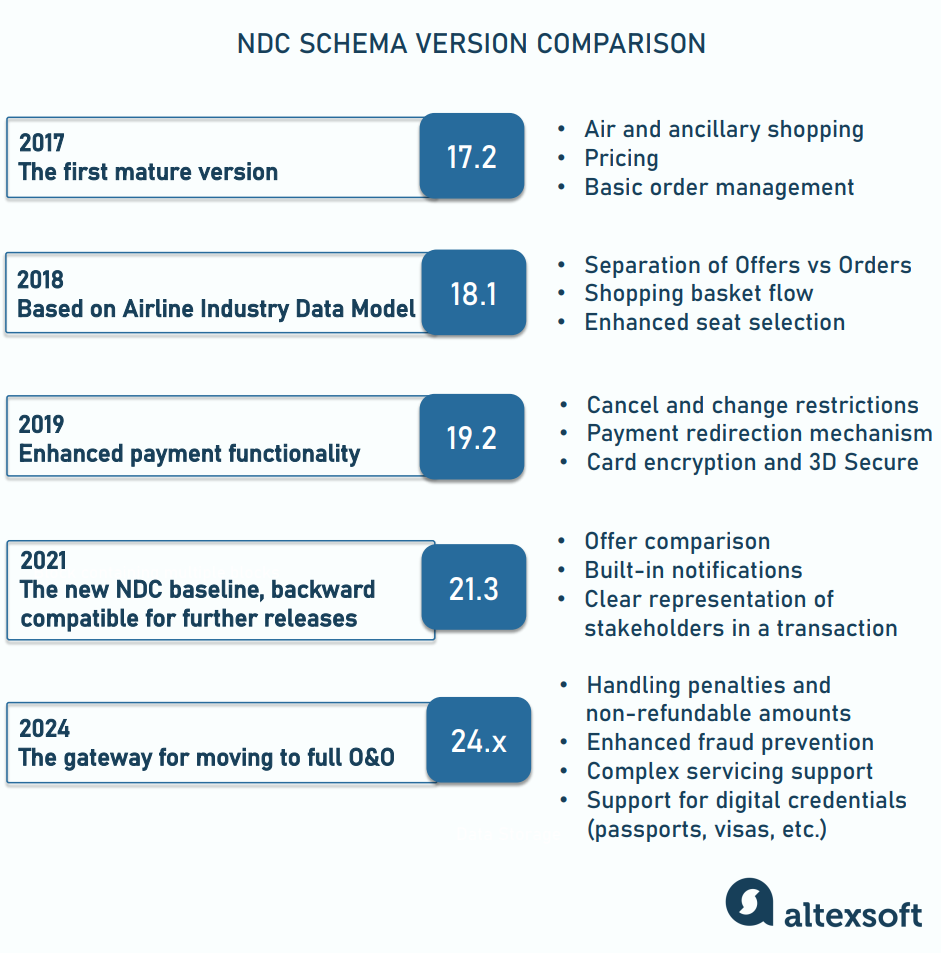
How each new version enhances airline retailing
Because of structural differences, upgrading from 17.2 to later releases is costly and technically challenging. It involves changes to the surrounding systems and connections to aggregators and resellers, which can be unwilling to spend money reinventing the integration they built just a few years ago.
So it’s no surprise that many airlines aren’t rushing to upgrade. Some have taken a more "patchwork" approach, introducing a couple of new features from newer schemas into their existing booking flows. But this quick fix only adds to the inconsistent, bumpy ride of the NDC landscape.
“Backporting is super tempting,” JP of Branchspace admits.”This is a way to quickly get a business value from the newer version without doing the massive product upgrade. The problem is that it breaks the schema structure as defined by IATA because version 17.2 is not meant to do things that appear in version 24.1.”
With the 21.3 schema, IATA introduced a new baseline, including backward compatibility to ensure migration to future releases will require minimal effort. As JP puts it, “Everyone was supposed to move to 21.3, but many players have instead backported some of its capabilities into 17.2 and 18.1, which are still the most widely used versions. That’s a sad turn of events for the industry.”
Rather than relying on workarounds, JP recommends fully committing to the new schema—but only when it offers enough capabilities that provide clear value over your current setup: “Don’t just think about what’s cool to you—talk to your agency partners, too. They might not prioritize the same features, and that’s where the challenge lies. Open communication is crucial to ensure the new version justifies the effort of upgrading. If everyone agrees on the value, go ahead with the migration. Otherwise, you’ll just end up stuck.”
Namrata of TPConnects agrees that moving to a new version makes sense when significant functionality or security improvements are introduced, or when partners require it for compatibility: "Airlines should carefully weigh the risks and costs of migration against the potential benefits. Version upgrades should be prioritized when they allow for gradual adoption and help expand market reach, such as by improving service flexibility or introducing new payment options."
Inflated computing expenses and the look-to-book ratio
As airlines transition to NDC, one of the key challenges they face is managing a surge in traffic levels and an inflated look-to-book (L2B) ratio. This ratio measures the number of search requests ("looks") compared to actual bookings, and it can become a significant financial burden. "L2B is the largest ongoing cost associated with NDC—and often the hardest to reduce," acknowledges Raquel of Air Europa. "In some cases, it’s beyond the airline’s direct control."
In traditional distribution, the GDS infrastructure absorbs the costs associated with search volumes and computation needed to generate offers. With direct and NDC sales, airlines bear these expenses through their own servers.
Metasearch engines and OTAs that were once connected to the GDS are now accessing an airline’s API directly to get better content. It means that all the computing happens on the airline’s side, which drives up IT costs.
Keep in mind that XML messages used by NDC are approximately four times larger than EDIFACT files for the same data. Additionally, to showcase the best offers, carriers may implement real-time dynamic pricing and personalization engines that activate with every request, further driving up cloud hosting usage and airlines’ bills.
The results? Sadly, the spike in search volume and related computational effort doesn’t always translate into a significant boost in sales. In leisure travel, it often leads to an extremely high L2B ratio. For large, tech-savvy OTAs, which do their best to deliver highly differentiated products to their customers, this metric can hit 20,000:1, meaning that for every ticket sold, resellers make 20,000 API calls to flight inventory providers. Although modern NDC API vendors are cloud-based and can scale to handle traffic surges, airlines still need to pay for any additional resources themselves.
“The agency portal UI, which works much like an airline’s website, has a natural limit to L2B, with maybe tens or hundreds of searches per booking," JP says. "But APIs are much more prone to spam and overloads. Every time an airline gets called, it triggers the entire shopping system to generate great products. And if the carrier doesn’t set any safeguards, massive metasearch engines and OTAs will end up draining its profits."
Strategies to address the issue include monitoring cloud costs, setting API limits, and using caching to minimize duplicate searches. TPConnects' Namrata also highlights distributed server architecture and customizable pricing models as key solutions to scalability challenges. She adds, “Strong API gateways and third-party aggregation platforms can help airlines scale efficiently, without merely throttling requests.”
Another approach is prioritizing relevant, personalized offers and collaborating with high-traffic travel partners to improve search efficiency.
"I know there are caches people try to implement, but that goes against the fundamental philosophy of NDC, which is about shopping in real time,” comments Barbara Moreno. “It's really about educating travel agencies and focusing on the quality of results, not the quantity. Why would you want to sift through 300 flight options? The goal should be to get what you want quicker, without overloading the system and driving up costs for everyone.”
Contractual level
Many airlines can't make the most of NDC because of their current contracts, especially full-content agreements with GDSs, which require suppliers to deliver the same products across all channels in exchange for lower distribution fees. If a carrier offers a special promotion on its website and NDC channel, the exact deal must be available through GDS. So there’s no way to customize offers based on the seller.
“Strict and long-term full-content agreements with GDSs limit the growth of new sales channels like NDC,” Raquel of Air Europa admits. “This not only reduces their overall impact and adoption, but also makes it harder for agencies to engage—especially when they don’t see a clear benefit."
But why not go their own way once these old contracts end? The reason is simple: GDSs and their devoted clients are too valuable to cut ties with. At least, it’s true for the majority of full-service carriers (FSCs). Remember how American Airlines withdrew its lowest fares from EDIFACT channels? This move damaged relationships with key corporate players, sharply reduced indirect bookings, and caused significant revenue losses. And what happened in the end? AA had to reverse the decision and put a great deal of effort into re-engaging agencies.
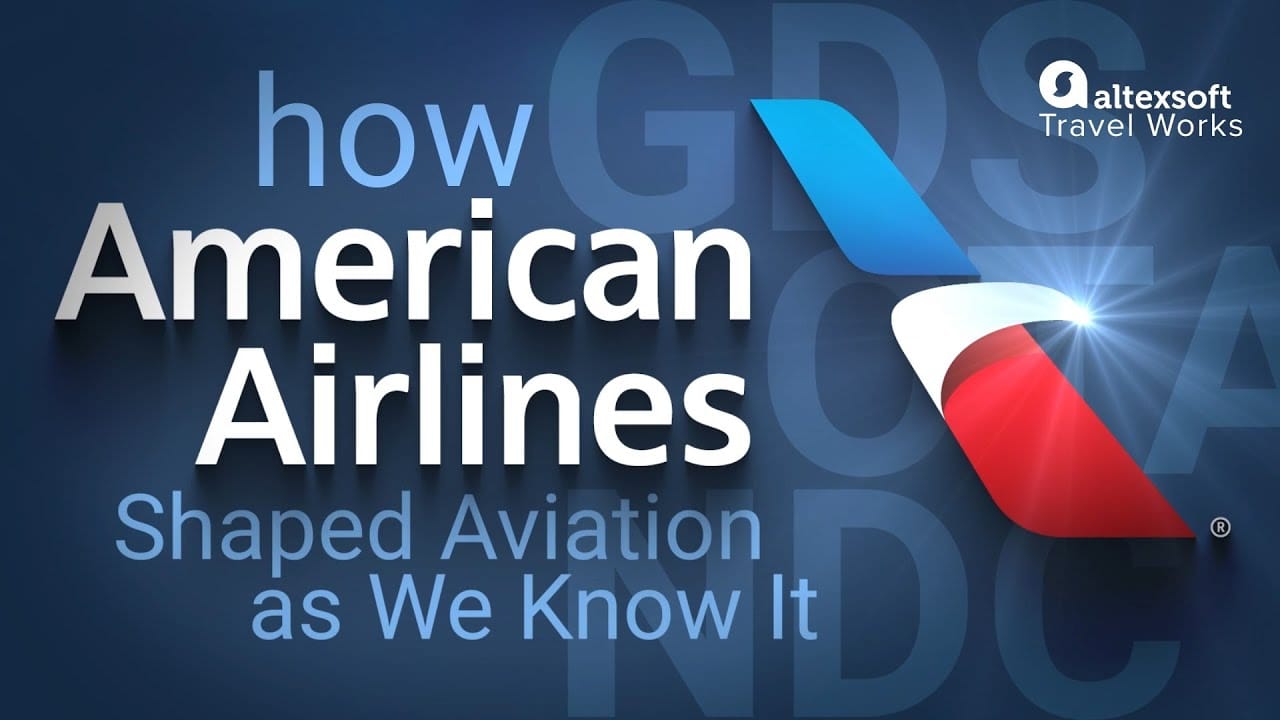

Watch the story of American Airlines
“Airlines have to be careful with their existing distribution partners, namely GDSs,” JP explains. “The expectation that most, if not all, agencies would be willing to connect directly has faced significant pushback due to poor booking experiences and a lack of unique content to justify the cost of the transition. Recent history has shown that most airlines still need GDSs as part of their new channels.”
Barbara Moreno recommends reviewing the distribution conditions: “When your agreement is about to expire, it makes sense to talk to NDC experts and get advice on how contractual terms may affect your options. Airlines should think carefully about their objectives and negotiate with those goals in mind, ensuring that agreements support, not limit, their NDC strategy.”
Product level
As mentioned earlier, one reason travel agencies hesitate to invest in NDC connections is the lack of content that truly stands out. Some carriers simply replicate EDIFACT propositions in new channels, often due to agreement constraints we've previously discussed. However, true impact comes when airlines offer something unique—better ancillaries, exclusive fares, or additional discounts. Su from Alaska Airlines says, “We offer exclusive content and ancillary bundles only through NDC channels, incentivizing agencies to integrate faster.”
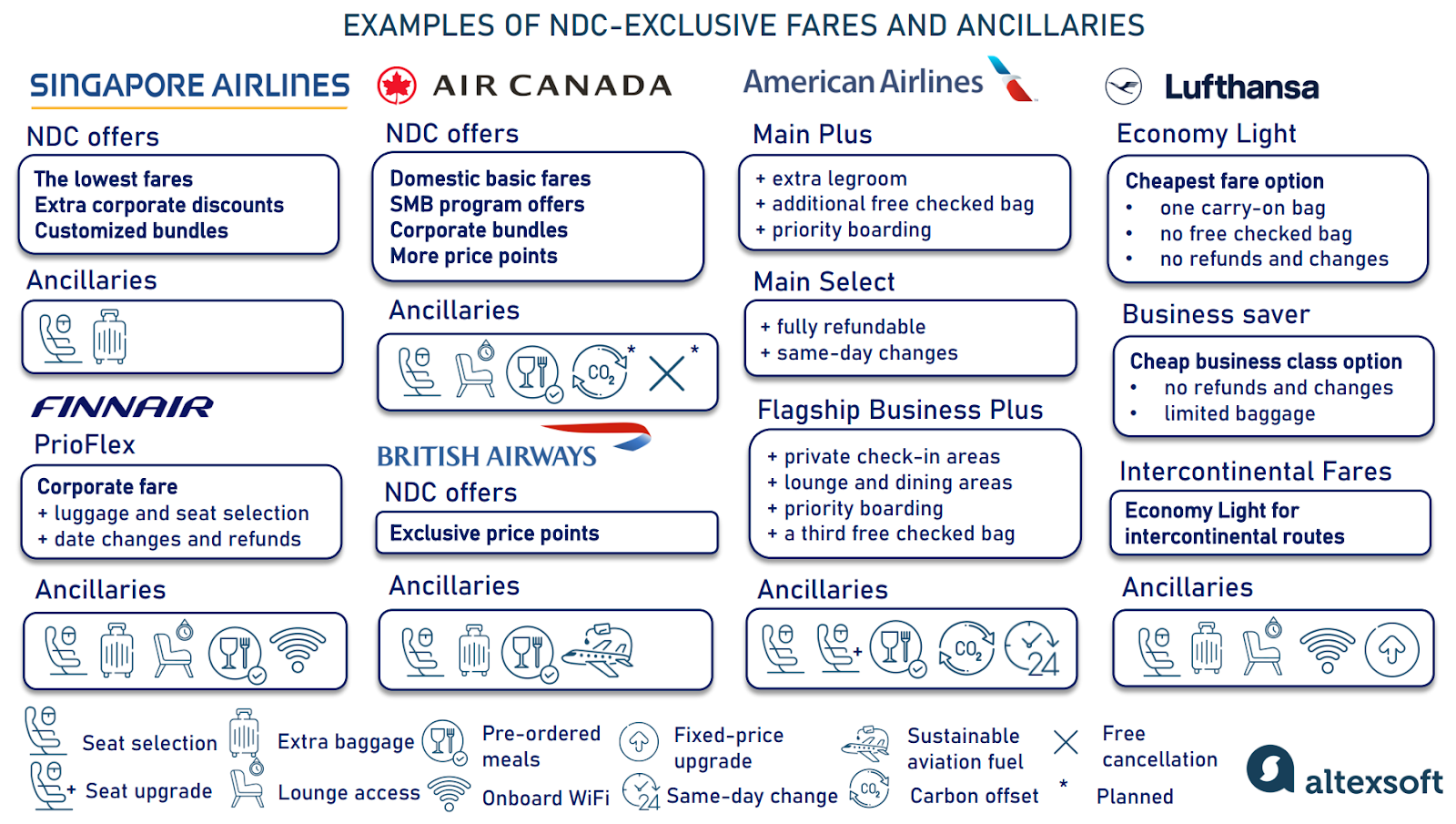
Examples of NDC products
Barbara of Accelya acknowledges that launching NDC products is easier in local markets where an airline enjoys strong brand recognition and established relationships with travel agencies: “For instance, Copa Airlines, a flag carrier in Panama, is almost 100 percent NDC domestically, but for international travel, it uses a mix of EDIFACT and NDC.”
To make NDC successful globally, airlines must decide how to expose their products via indirect channels to attract end users while meeting reseller needs. “You can introduce bundles that are highly appealing to travelers,” JP explains. “But can you handle massive search volumes from leisure OTAs? Can you attract the corporate segment as well? Can their booking tools connect to your API? Can you differentiate your content for various customer bases and ensure the best experience for all?”
There are many questions, and they’re not easy to answer until everything is aligned at the organizational level.
Organizational level
In the long term, airlines must allocate resources for developing, maintaining, and monitoring NDC channels. As part of the reorganization, “They have to enable their call centers to service NDC bookings, since today, the automation of NDC flow is far from perfect or complete,” warns JP. Additionally, this effort requires creating cross-functional product teams with expertise across various domains, such as ancillaries, loyalty programs, and marketing.
Most airline systems are designed around GDS workflows, and switching to NDC requires rethinking these processes. Despite the clear, long-term benefits, it is often seen as a significant step backward.
Accelya's Barbara Moreno acknowledges that launching NDC-enabled products is most successful when an airline combines a clear communication strategy and a compelling proposition for travel sellers: “For example, several of our airline customers with a strong presence in their home markets have achieved up to 90% NDC adoption, driven by their ability to build trust with agencies and clearly communicate the value and differentiation of their offers through NDC.”
How to make NDC a success: best practices
NDC is a major transformation that impacts various levels of an airline's operations, from distribution to customer experience. To ensure successful implementation, it’s essential to approach the process with a clear strategy and structured planning. As Namrata from TPConnects explains, “The most successful airlines, like Lufthansa Group, Qantas, and Singapore Airlines, establish transparent migration paths and invest in their NDC offering with continuous technology training and support.” Below are key best practices that can help make NDC a success for any airline.
Start by figuring out a strategy and then break it down into actionable milestones. Review your current strategy and determine how NDC fits into it. Once this strategic alignment is clear, set actionable goals and milestones. “Define a phased implementation plan, prioritize key partners, and establish a cross-functional NDC team,” Su from Alaska Airlines describes the first steps. “Select the right technology partner, build foundational APIs, and iterate based on feedback while closely monitoring performance and adoption. As an example, an airline might begin by enabling basic NDC shopping and booking for a single partner before scaling up to include servicing and ancillary sales over time.”
Airlines should adopt a phased integration approach, focusing on robust API design, thorough testing, and strong change management processes.
Air Europa's Raquel emphasizes: “What matters most is simply getting started. It’s clear that NDC and Offer & Order are the future of the industry, and airlines need to adapt. The key is to take it step by step and learn along the way. Having a clear strategy is also essential—it helps guide the process and ensures the right decisions and changes are made at the right time.”
Select the right technology partner. One of the milestones Su mentioned is selecting the right technology partner. What should airlines pay attention to if they choose to buy an NDC platform — instead of building it in-house?
JP of Branchspace recommends considering three main factors. First is the coverage of NDC capabilities—from shopping to post-booking services. Second is the maturity of tools for monitoring and managing NDC сhannels: “It’s important to track the behavior of distribution partners to understand who are the best and worst players, and take action if anything goes wrong.” Last but not least are performance metrics: response times for shopping transactions, percentage of timeouts, etc.
Raquel highlights several key criteria for selecting the right API provider, including support for multiple schema versions, post-sale functionality, strategic alignment, and clear communication. “It’s also crucial that the API allows configuration by agency, giving us autonomy over how processes are managed,” she adds. “Besides, having a fast and efficient incident management system can make a significant difference.”
Namrata Balwani at TPConnects further notes that when choosing a tech partner, airlines should consider factors like “implementation speed, modularity, scalability, support for the latest NDC schemas, robust security, rapid onboarding for resellers, and a proven track record of successful integrations.”
Address security risks. NDC introduces new security challenges as agencies gain direct access to airlines’ IT systems, which they previously did not have. Also, “NDC involves the exchange of rich passenger data, including personal details, payment information, and travel preferences across multiple systems and third-party platforms,” warns Namrata Balwani.
According to Su of Alaska Airlines, “Carriers must prioritize secure authentication methods (e.g., OAuth), encryption, role-based access controls, and continuous monitoring.” Ensuring partner due diligence and compliance with data protection regulations like PCI DSS and GDPR is also essential. For example, storing customer PNR data and payment tokens in external systems used by resellers increases the attack surface, making it critical to implement secure tokenization and encryption.
Track the performance of NDC channels. Among key metrics to monitor, Namrata names
- cost per booking - shows how the shift to a new booking channel drives cost savings;
- revenue growth - measures the increase in revenue generated from sales of products, particularly ancillaries, exclusively offered in NDC;
- average yield - represents the profitability of each flight. NDC boosts this metric allowing airlines to upsell and cross-sell;
- partner activation and coverage - tracks the number of partners shifted from legacy to NDC channels.
These KPIs help airlines assess the success of their NDC strategy and its impact on their operations, customer engagement, and financial performance.
Support travel agencies. Barbara at Accelya Group emphasizes the importance of educating partner travel agencies: “Obviously, airlines have to invest in onboarding and training key partners so they can successfully adopt and market NDC products.” This includes providing the necessary resources, technical support, and guidance on how to leverage the NDC's advantages.
Namrata at TPConnects adds that encouraging travel agencies is primarily a commercial rather than a technical task: “The alignment of commercial interests through targeted programs and value propositions is key to unlocking adoption potential.” Taken together, the more airlines collaborate with their travel agency partners, the faster and smoother the NDC transition will be for everyone involved.
